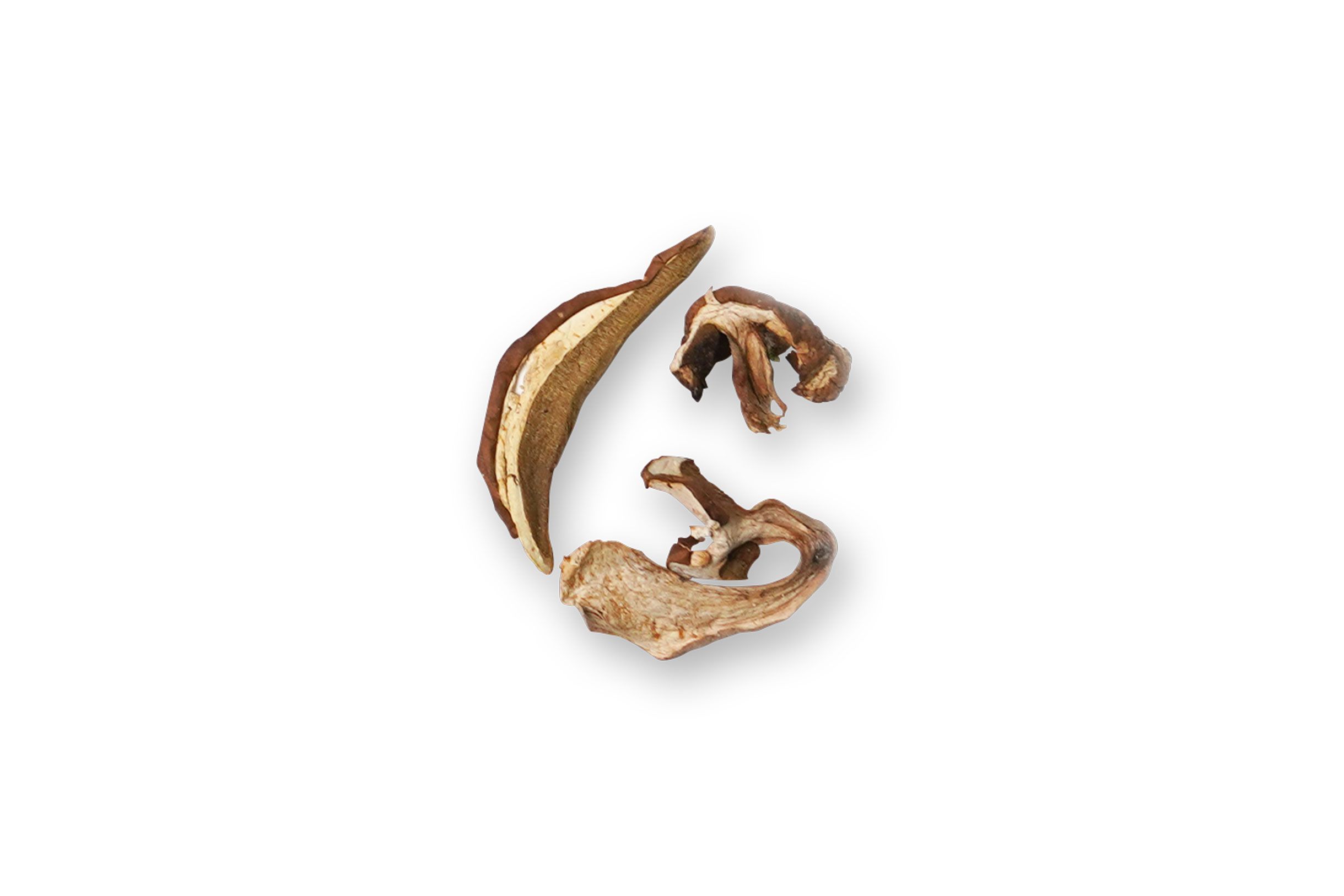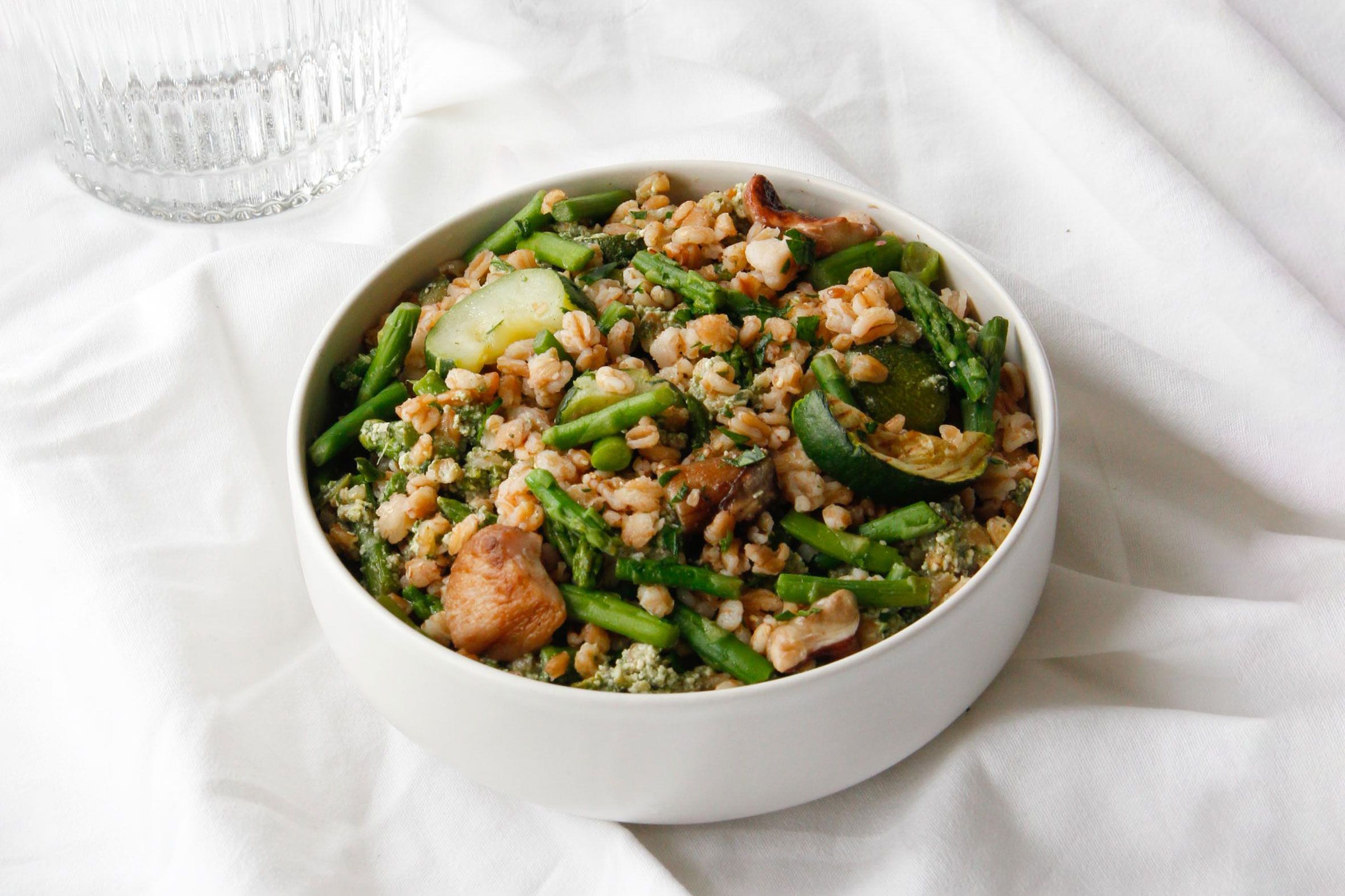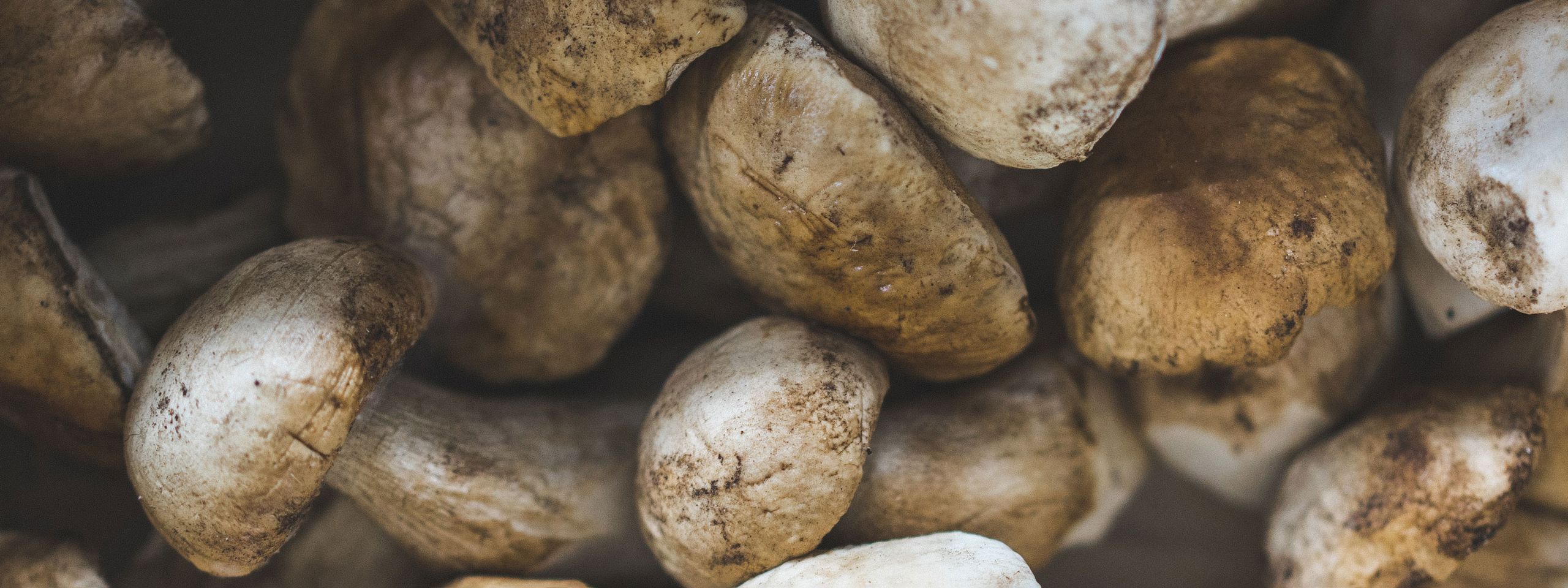Porcini mushroom
Fungal protein
Intro
Porcini mushrooms were also known as the ‘gentleman’s mushroom’ and were supposed to be delivered to rich lords in the middle ages. Their exclusivity is still present today. Originating from the forests of northern Italy where they are often stolen still today. Its not that surprising, because these natural wonders are full of protein and other valuable nutrients. How you can enjoy them yourself will be explained below.

What are porcini mushrooms?
Porcini have a thick white stem with a brown, leather-like cap. The caps are quite hard with outward facing waves. Porcini (Boletus edulis) grow up to 31cm in size and belong to thick boletus fungi. They tend to grown in shady areas of forests or on the side of wood paths. Preparing them is easy, but their cultivation is tricky. They are more expensive fresh than they are dried.
If they’re ready to be eaten, can be determined by their white stems and brown caps. Discoloration or spots are a sign that they are over ripe.
Flavour-wise, porcini is described as being earthy and nutty, while the consistency is meat-like.
Dried (imported from China or Balakan) they are typically found in Italian grocery stores. Careful: if you can see crumbs in the package, its a sign of sub-par quality.
Porcini is used as a delicacy as well as a healing power.

Where do porcini come from?
Porcini are grown wild in Europe (especially Italy) as well as in parts of North America and Asia.
Which varieties are there?
Bronze-Boletus (Black headed porcini)
(Boletus aereus)
-Dark, bronze-brown-black cap (max. 25 cm)
-White, narrow standing tubes with spores
Common Boletus (Boletus edulis)
-Brown cap (max. 30 cm)
-White-yellow pores
-Light net
-White flesh
Pine Boletus (Boletus pinophilus)
-Brown, brown-red, purple semi circular cap (8-25 cm)
-Brown-red long stem
-White- crimson flesh
-Found in pine forests in the Mediterranean
Summer Boletus (Boletus aestivalis)
-Found between May and October
-Semi-circular, pillow shaped cap (5-20 cm)
-Fine-felted brown cap
-White pores with a pink shimmer
-Bulbous, light brown stalk with light veins
-White to light brown flesh
When are porcini in season?
They are available July-October in central Europe, but predominantly available in autumn months.
Our tips for how to enjoy porcini mushrooms:
In risotto, pastas, as a meat alternative, in soups, stews, spätzle and knödel
Store in your fridge in a paper bag and consume them as soon as you can. Dried, they last for up to 6 months. Store them in a dry and dark place.
Compared to other types of mushrooms, porcini can be eaten raw as well.
Porcini should be cleaned with water or a damp cloth. Dried porcini mushrooms should be placed in warm water for 20-30 minutes before cooking with them. This helps them soften which gives them a nice, chewy bite. The leftover water can be used as a flavourful ingredient in soups at a later time.
Conversely, too much moisture can affect the quality of a fresh porcini mushroom.
Cooking with fresh mushrooms intensifies their meaty-flavour. Drying them intensifies their aroma.
Steamed, fried, grilled, roasted or stewed – the options are limitless for porcini but as a general rule of thumb its best to treat them carefully.
Porcini Nutrition Facts per 100g:
| Typical Values | 100g |
|---|---|
| Calories | 32 |
| Fat | 0g |
| Carbohydrates | 1g |
| Fibre | 5.5g |
| Sugar | 0g |
| Protein | 4g |
Nutrients found in Porcini:
Vitamins:
Vitamin B, u.a. B2, B3, B5, Vitamin D, Vitamin E und Vitamin K
Minerals:
Iron, Potassium, Copper, Manganese, Phosphate, Selen and Zinc

